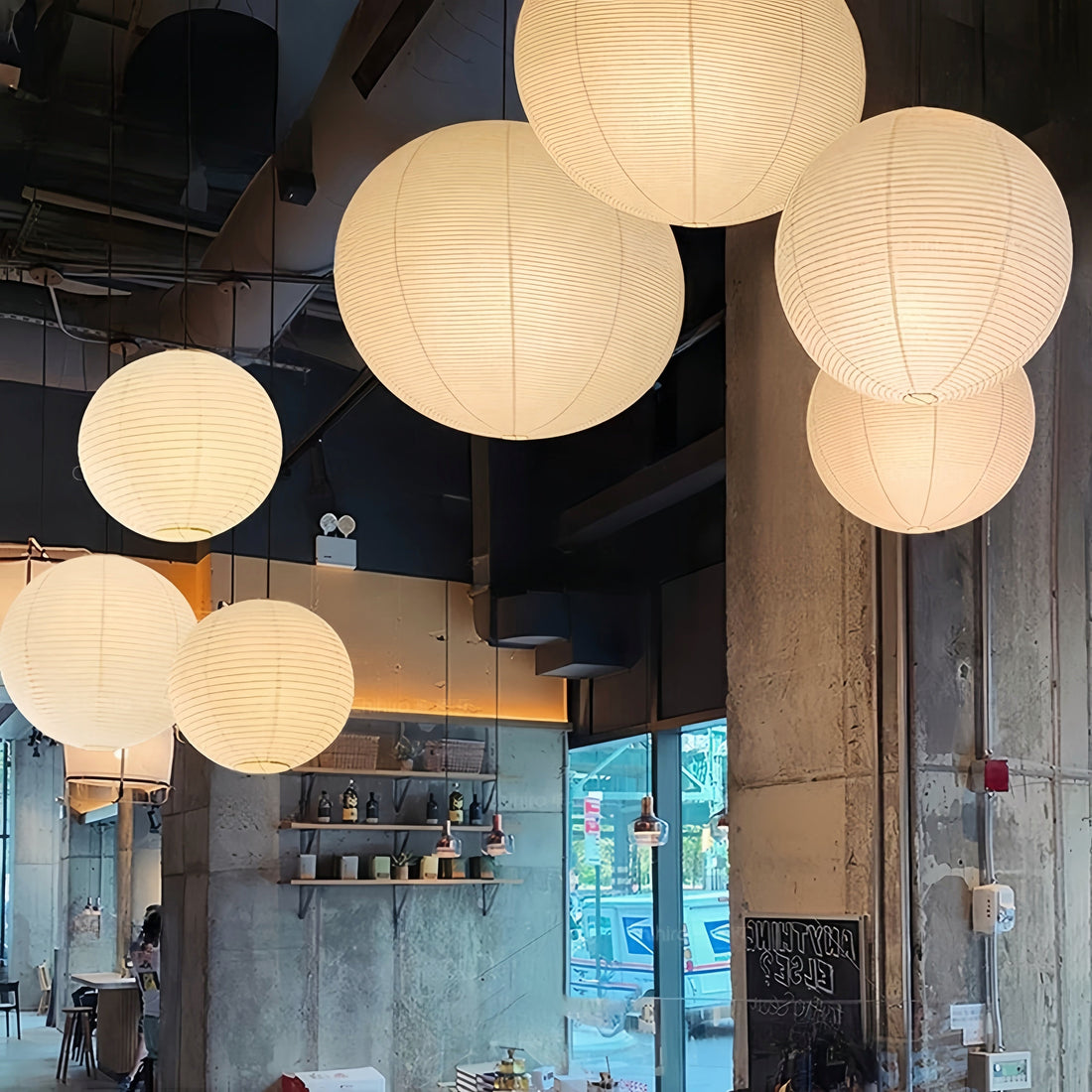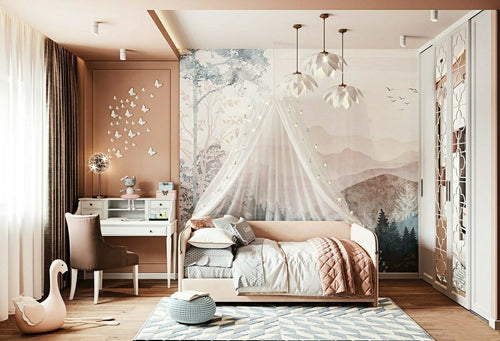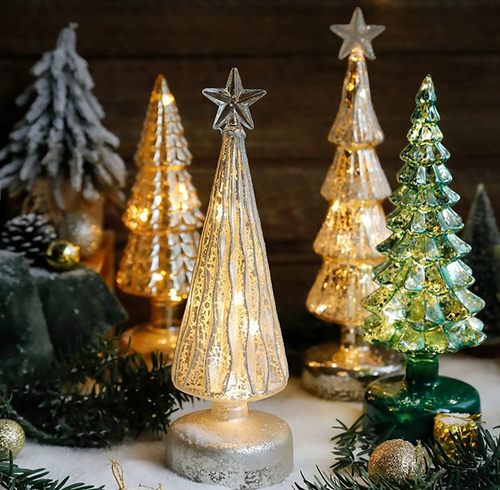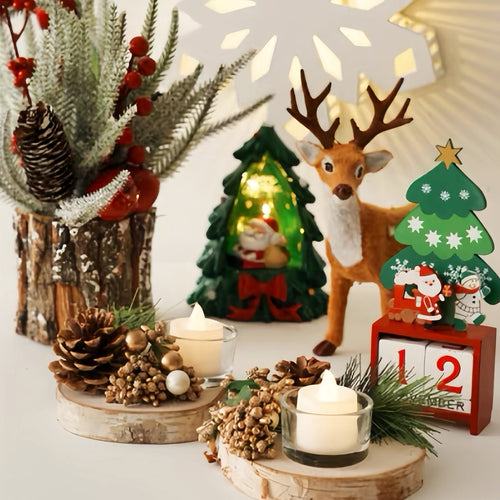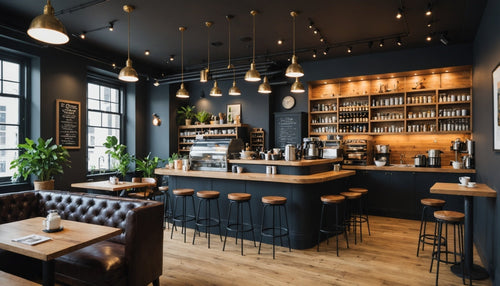Team ceiling lights with living room wall lighting ideas and table or floor lamps to balance bright illumination with a cosy ambient glow. Don’t be afraid to choose contrasting fixtures, like this minimalist arched floor light and abstract end-table lamp.
Oversized designs are on trend, but the size of a fixture should be proportionate to the room’s dimensions. In this sleek space, a simple iron chandelier complements Old World and modern elements.
Dining Room Lights
A dining room requires specific lighting to set the mood and create an intimate space for a meal with family or friends. Overhead pendant lights or cove lighting that illuminates the ceiling can provide ambient light. Accent lighting, such as wall sconces or track fixtures, can draw attention to artwork and other decorative elements.
When paired with dimmers, a dining room fixture can help you adjust the brightness according to the occasion. For casual meals, dimming the overhead lights to produce a warm, soft glow can make the space feel cosy and inviting. When entertaining, a brighter ambiance can be created by raising the lights to focus on the food and conversation.
The right dining room fixture will serve as the focal point of the space, catching the attention of guests as they enter the space. To avoid overpowering the space, choose a chandelier or other low-hanging fixture that is appropriate for the size of the dining table and the overall decor style.

For a modern or minimalist look, opt for a simple chandelier that will enhance the clean lines of your dining table and other furniture pieces in the space. If you have a dining room that is more traditional or elaborately decorated, a large octagonal pendant can create an elegant focal point with its unique shape and texture.
To avoid overwhelming the space, consider pairing your main pendant or cove light with other types of lighting to create a layered lighting scheme. Table lamps and floor lamps will complement the ambiance provided by your main fixture while adding task lighting for reading and other activities. Sconces can be installed on either side of a sideboard or hutch to illuminate serving areas and add interest to the room's architecture.
While a pendant or chandelier serves as the main focal point of a dining room, you can add accent lighting to emphasise architectural features and other decorative elements in your home. You can create a striking visual effect by hanging a sconce on each side of a painting or other decorative piece, which draws the eye up to highlight its details.
Ceiling medallions have the ability to attract attention upwards, thereby amplifying the impact of your lighting fixture and contributing an additional touch of style to your space. Available in a range of materials and configurations, medallions can complement nearly any decorating style.
Whether you're hosting dinner parties or enjoying a casual meal at home, the right lighting can transform the ambiance of your dining room and promote an inviting atmosphere for any occasion. Proper illumination not only sets the mood for dinner parties, but it also enhances the comfort and enjoyment of daily tasks and family meals. A well-designed layered lighting scheme can significantly enhance the ambience. Using the tips we've shared, you can select the perfect light for your dining room and create a stylish, functional space for everyday living and special occasions alike.
Hallway Lights
For a hallway that needs to be bright and practical, recessed lights are the most cost-effective option. Depending on how long the hallway is, you may need one or more fixtures. Longer hallways typically benefit from more lights to evenly light the space.
For hallways that need a more decorative touch, opt for flush mount fixtures with glass or metal trim. A hammered glass flush mount, for example, is a stylish upgrade from clear glass and adds textural interest to a ceiling. Likewise, a modern standing accent lamp can add moody hallway lighting with style that’s as unique as the home’s decor.

Using ceiling lights in hallways for more than just illumination is a great way to showcase artwork, family photos, and other decorative elements. Hanging track lighting is another easy way to highlight these features. The narrow beam angle of these fixtures is ideal for highlighting art and other objects while also decreasing the contrast between the object and surrounding walls.
If your hallway leads up to a staircase, it’s important that the stairs are properly lit. These spaces require a brighter and more directional light to prevent accidents, especially when someone is rushing up or down the steps. Ideally, staircases should be lit with a combination of bright ambient lighting and focused, spot, or task lights to avoid shadowing or glare.
These types of lights can also be used in hallways that lead to rooms like bedrooms or bathrooms. A more ambient light in these areas is best for relaxing and preparing for sleep. This type of light is typically a warmer colour than the ambient lighting in the living room.
While there are many different styles of ceiling lights, finding a set that works well together can be tricky. Fortunately, the finishes and details of these fixtures tend to be very similar, which makes it easy to find matching pieces for the same area. For example, the silvery finishes of both the pendant (#1) and semi-flush mount fixture (#2) are similar, as are their cylindrical bulb bases and pointed framing.
For a more custom look, you can combine the best features of these fixtures to create a unique lighting plan. For example, you can pair the directional spotlights of #2 with the ambient lighting of a flush mount shade (#4). This allows you to create a hallway lighting plan that is both functional and fashionable. If you’re unsure about how to mix and match your favourite lighting styles, consider having an experienced professional do it for you. They’ll help you choose the right light fixtures and install them safely. They’ll even offer tips on how to maximise the functionality and appeal of your hallway lighting.
Front Door Lanterns
Lanterns are a great way to add a little flair to your front door. They are easy to use and come in a variety of styles. They can be placed on a table, on the side of your door or hung above it. They look great with any colour door and help to make it look more elegant. If you want a more rustic look, choose a lantern with a lot of wood or metal. If you want something more modern, choose a lantern with clean lines and a sleek design.

When deciding what type of lantern to hang over your door, it's important to consider the style of your house and the surrounding vignette. For example, a simple saltbox or Cape Cod will look good with copper onion lanterns, while a Queen Anne-style home will be better served by lantern-style sconces. The lantern should match the architectural style of the home and complement the ambiance created by other features, such as gingerbread trim or fancy shingling.
Overhead lanterns are usually the preferred choice for a front door. However, if the space is too small to accommodate an overhead fixture, lantern sconces can also be used on either side of the door. For best results, the sconce should be at least as tall as the door handle. The bottom of the lantern should be 5'-7" from the ground and 6" if it's hanging on a chain or stem.
If your entrance area is larger, placing a medium or giant lantern above your door can create a significant impact and enhance the overall appearance of your entryway. If you opt for a large or oversized lantern, be sure it's UL wet-rated. This is necessary around doors that open to the elements so rain, snow, and salt air can't contaminate live wires and other electrical components.
In addition to serving as a decorative element, lanterns can also be very useful. For example, you can fill them with candles and put them on a table for a cosy reading nook. You can even create a party-worthy centrepiece by placing a few filled lanterns on a mantel or bookshelf. They're a great alternative to gift baskets for baby showers, weddings, and parties.

